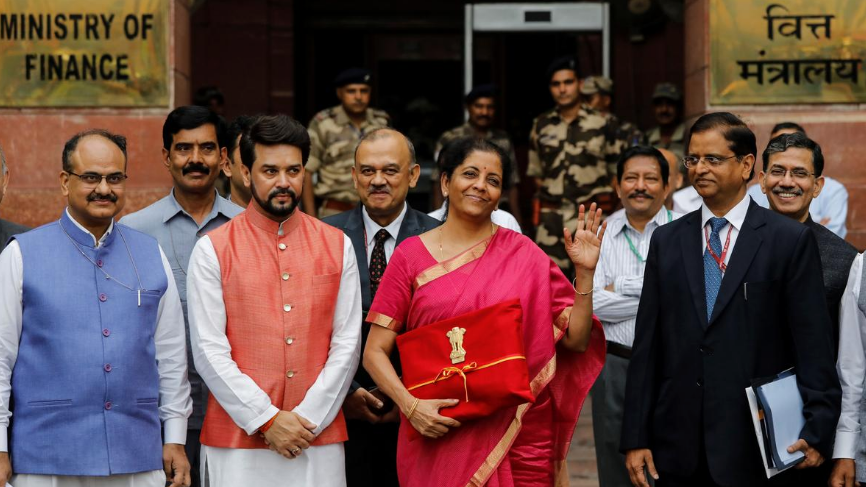

Indian Prime Minister Narendra Modi's government unveiled the budget for 2019/2020 on Friday, seeking to reverse weakening growth and investment that threaten to take the shine off a recent landslide election victory.
Finance Minister Nirmala Sitharaman, presenting the annual budget statement to parliament, said the government planned structural reforms to kickstart foreign and domestic investment.
Modi has set a target of growing India into a 5 trillion U.S. dollar economy by 2024/2025 from the current 2.7 trillion U.S. dollars. A government report on Thursday said that will be done on the back of higher investment, savings and exports, in a model similar to the one that propelled China's growth.
"We need to invest heavily in infrastructure, digital economy, job creation," Sitharaman said, adding India is set to become a 3 trillion U.S. dollar economy in the current fiscal year.
But economists say scaling up Asia's third largest economy in rapid fashion will need bold reforms including freeing up land and labor markets, which Modi shied away from in his first term for fear of political backlash.
Capital Economics said in a note on Friday that reaching that target "is dependent in large part on achieving real GDP growth of eight percent a year, which we think is unlikely."
Land and labor reforms are difficult in a democracy like India and it seems unlikely Modi will risk drawing the ire of his Bharatiya Janata Party voters that re-elected him with a huge mandate.
India's economy is also running into global headwinds with growth weighed down by trade wars and protectionism.
Asia's third largest economy grew at a much slower-than-expected 5.8 percent in the last quarter, the weakest growth in five years and far below the pace needed to generate jobs for the millions of young Indians entering the labor market each month. The unemployment rate also rose to a multi-year-high of 6.1 percent in the 2017/18 fiscal year.
New investment proposals in 2018/19 fell to 9.5 trillion rupees (138.7 billion U.S. dollars), the lowest investment proposals recorded in 14 years, according to the Center for Monitoring Indian Economy (CMIE), a Mumbai based think tank.

Copyright © 2018 CGTN. Beijing ICP prepared NO.16065310-3
Copyright © 2018 CGTN. Beijing ICP prepared NO.16065310-3